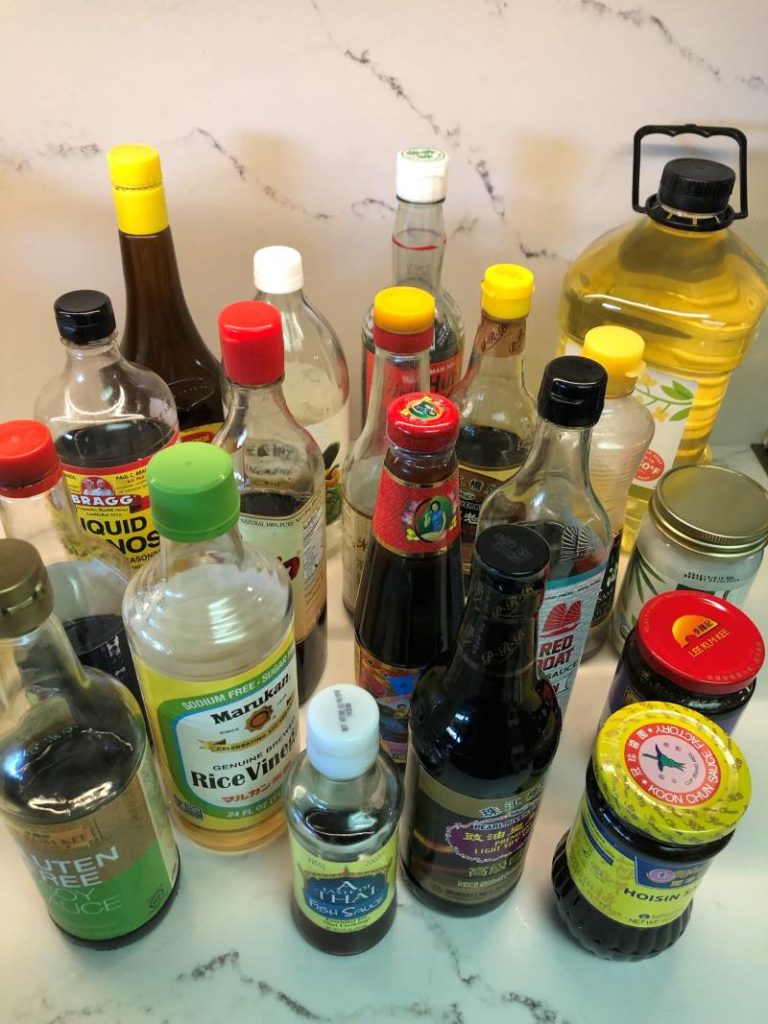
Whether you’re shopping for Asian condiments at a standard grocery store or an Asian-focused market, it can be hard to decipher what’s what. I tend to linger in the condiment section, which often spans one side of an entire aisle. There’s always something new and interesting to consider and I'm an overly curious cook.
Among the responses to one my articles on Asian markets was a suggestion to post my preferred brands. The purpose would be to help folks know how to select and filter the options. Of course! Let's start with Vietnamese condiments. It would be easy to simply list a bunch of brands but honestly, that wouldn’t be helpful. From time to time, brands change formulations and, each person has a personal palate to please. Given that, I put together a flexible Vietnamese condiment cheat sheet of commonly used ingredients so you may build your own pantry wisely.
You don’t need to have all these condiments on hand to make Vietnamese food. You may already have some of these items in your kitchen if you make southern Chinese and Southeast Asian dishes. By nature, Vietnamese cooking overlaps other cooking styles. That’s to say, you get lots of bang for your efforts and outlay when you build a Viet panty!
(Korean and Japanese cuisines require slightly different condiments; though the differences may seem subtle, they’re not. A wondrous array of spices set the tone for South Asian cuisine. To not confuse, I’m limiting myself to a smaller part of the region. Thanks for understanding.)
Fish Sauce
If I could only choose one Asian condiment to keep in my pantry, fish sauce would be it. Most savory Viet dishes rely upon the umami-laden seasoning for their signature flavors. Ditto for Thai dishes. Fish sauce smells strong (the good stuff is heady like dried porcini) but it’s commonly combined with other ingredients. Embrace nước mắm.
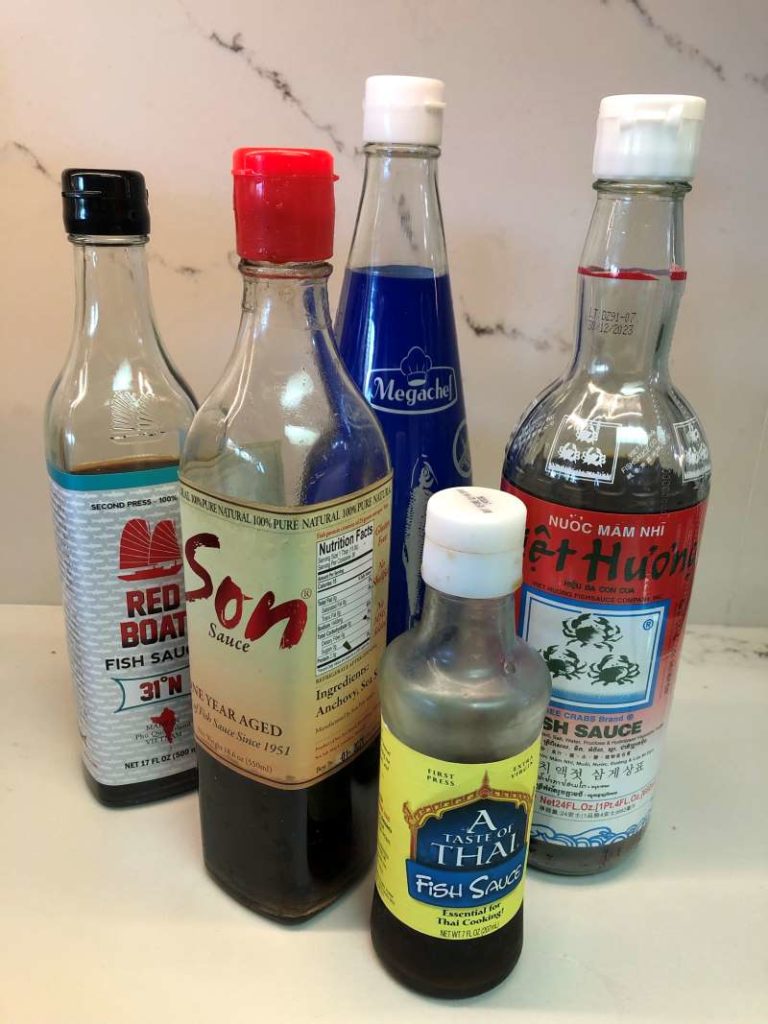
Check ingredient listings if you’re gluten sensitive. If you don’t use fish sauce often or if it’s artisanal and has no preservatives, refrigerate the bottle. If fish sauce darkens and intensifies in flavor, use a little less than usual. You can always add more but it’s hard to remove it!
Fish sauce is used in several Southeast Asian cuisines. There are different fish sauces to match the flavor profile of say, lusty Thai dishes, earthy Filipino flavors and the rolling hills of Viet preparations. The brands I suggest below are what I use for Vietnamese cooking. They’re good for other cuisines too, so long as the fish sauce flavor isn’t on the sweet side. Some fish sauce is formulated to be sweet-ish.
Finally, commonly used fish sauce in the Viet kitchen is the clear, mahogany colored condiment called nước mắm. It is not the sludgy, pungent condiment that’s often labeled fish sauce in English but is actually mắm nêm; that condiment is used for a handful of dishes in the repertoire.
Brands: Red Boat and Son (artisanal), 3 Crabs/Viet Huong/Flying Lion (a perennial favorite, a little saltier than others), Megachef (salty-sweet, labeled “anchovy sauce”), Dynasty (earthy, savory), Thai Kitchen (flat but perfectly useable in a pinch)
Soy Sauce
Of the many styles of soy sauces, Chinese-style soy sauce is most often in Vietnamese kitchens. In particular, Chinese light soy sauce is considered the go-to. A “light” soy sauce is not low in sodium, but light in color. When “dark” soy sauce is used, it’s inkier and used to impart rich color to certain dishes (dark mushroom soy sauce is excellent but relatively salty).
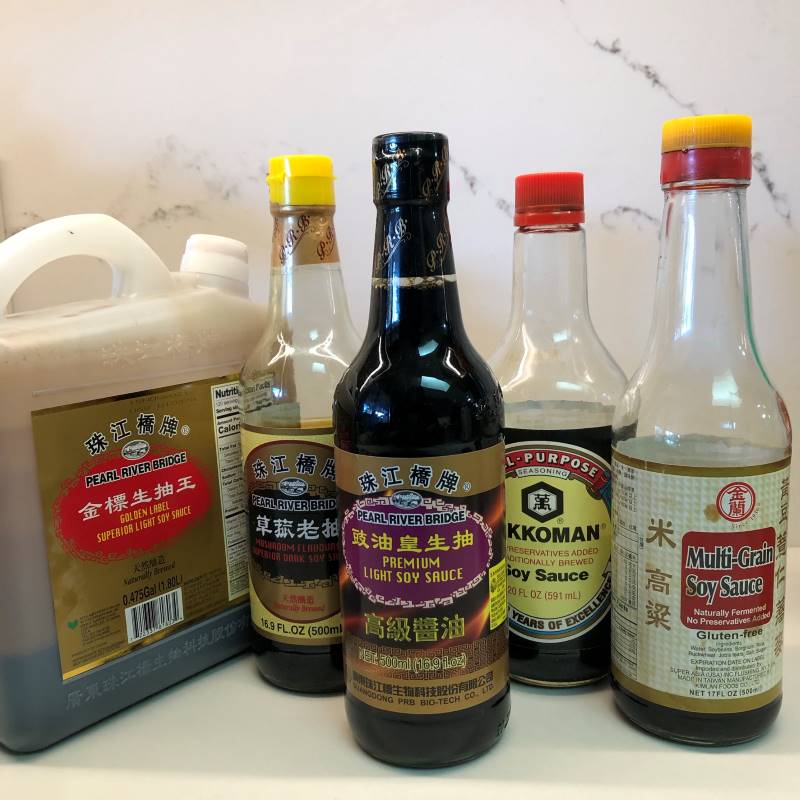
If you use low-sodium soy sauce, you may need to use more or maybe you’re used to it so use it as a straight 1-to-1 swap. Tamari is relatively dark but not as dark as Chinese-style dark soy sauce.
In Vietnam, what may be considered as soy sauce nowadays borders on tasting like Maggi Seasoning sauce (see below). Some Viet cooks like a sweet tasting soy sauce by Kimlan, which is made in Taiwan and has a mild flavor. I favor a bolder-flavored soy sauce because it’s more versatile. I can use it for Viet and Chinese dishes. That said, Kimlan makes a terrific multigrain gluten-free soy sauce.
Brands: Pearl River Bridge (light, superior light, premium light, dark and dark mushroom), Kikkoman (regular or gluten-free, a tiny bit darker than PRB’s light), Kimlan (multigrain gluten-free), Lee Kum Kee
Maggi Seasoning Sauce or Bragg Liquid Aminos
Introduced by French colonials, Maggi Seasoning sauce lends a unique meaty flavor to food and is key for great banh mi. You can substitute Bragg Liquid Aminos, a health food favorite that is often shelved with Asian ingredients. Supermarkets with a strong Asian or Latino clientele may have Maggi. There are many kinds of Maggi for different cuisines.
There are many Maggi mimickers sold at Vietnamese markets and elsewhere. Knorr makes its own version and Thai Gold Mountain sauce tastes like Maggi too; their labeling is different. On the other hand, there are total Maggi knockoffs.
Oyster Sauce and Hoisin
Oyster Sauce: Thick and salty-sweet oyster sauce is employed in stir-fries and other dishes. To underscore the condiment’s piscine notes, I often combine it with a little fish sauce.
Brands: Lee Kum Kee (the panda label is good, but the label with the woman and boy in a boat is better), Kikkoman (very good with no MSG), Dynasty (less salty as others, so use about 25 percent more)
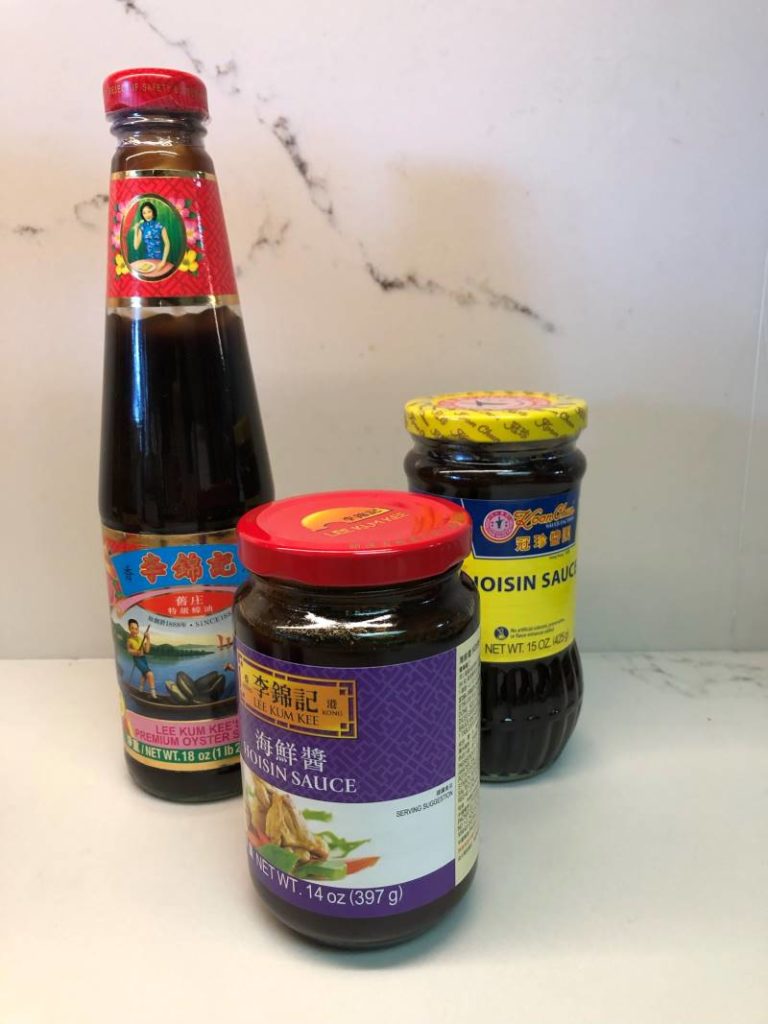
Hoisin sauce: Made from fermented soybeans, sweet-salty-spicy hoisin is often used in marinades and dipping sauces. Hoisin contain traces of wheat, so do take care if you’re cooking for folks who are highly sensitive to wheat gluten.
"Pho hoisin sauce" sold in the squeeze bottle is basically super sweet hoisin sauce that's somewhat thinned out. I wouldn't use it 1:1 for regular hoisin sauce. Buy hoisin sauce and thin it out for pho or use it straight.
Brands: Lee Kum Kee (a popular, reliable brand), Koon Chun (sold at Chinese and Southeast Asian markets, it has bolder flavor that LKK)
Chile Garlic Sauce, Sambal Oelek, Sriracha
Most people think that sriracha is synonymous with Vietnamese food because it’s on the table at nearly all Vietnamese restaurants. That’s not the case. Next time you’re at the market, check out Huy Phong/Roster’s label for chile garlic sauce. It says tương ớt tỏi Việt-Nam which means Vietnamese chile garlic sauce.
Huy Phong divides up the Southeast Asian chile sauce markets to produce Sriracha for a Thai-syle hot sauce. Sambal oelek is crafted for Indonesian and Malay flavors. What’s the difference? Chile garlic sauce is bright and moderately hot, sriracha is tangy hot, and sambal oelek is earthy hot. For Viet food, choose chile garlic sauce or make it with the recipe in Vietnamese Food Any Day. That said, if you don’t have chile garlic sauce, use one of the other two.
Brands: Rooster/Huy Fong, Fix Sriracha, Tabasco Sriracha
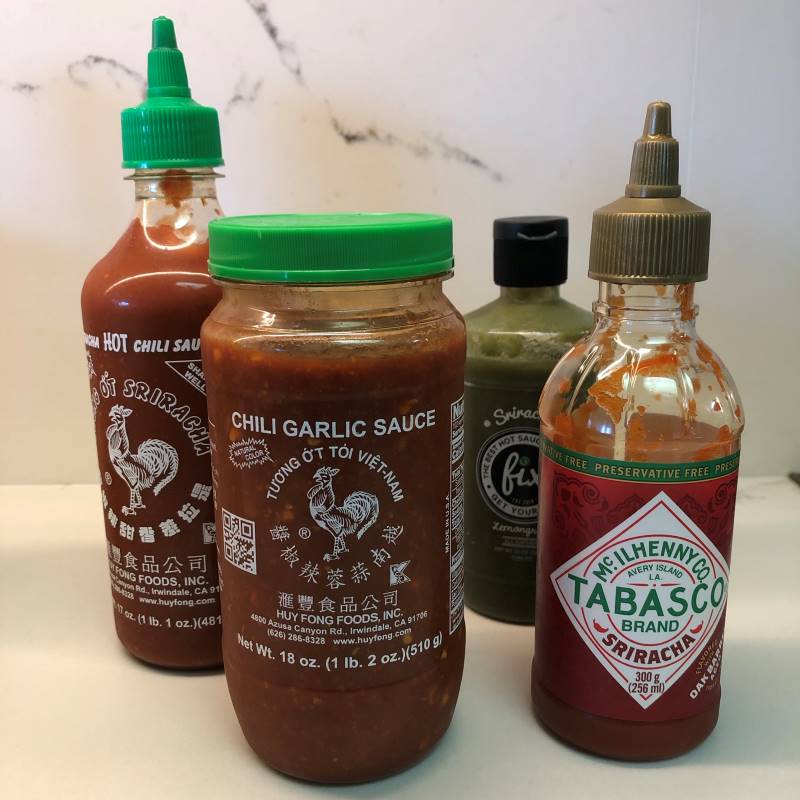
Coconut, Sesame and Peanut Oil
Coconut Oil: For Vietamese and other Southeast Asian cooking, I use unrefined coconut oil to savor the splendors of the coconut. That’s what I’m looking for in my food. I’m not looking to hide the coconut flavor.
Brands: Thrive, Nutiva, and store brands such as Trader Joe’s and Whole Foods
Sesame Oil: Toasted (dark) sesame oil is used in Vietnamese cooking, just like it is in Chinese, Japanese, and Korean cooking. I favor the consistently deep flavor of sesame oil produced in Japan. I keep mine in the refrigerator, even though I use it about once a week.
Brands: Dynasty, Kadoya, Spectrum (in regular oil section)
Peanut Oil: When I want a nuttiness, I reach for peanut oil. I use refined peanut oil in my kitchen as a neutral oil, though I’ve sometimes detected a charming peanutty lilt. (I also use expeller press canola oil as a neutral oil.) For a bigger peanutty flavor, I reach for unrefined or semi refined peanut oil. Unrefined tastes like peanut butter but it has a relatively low smoking point. Semi-refined can take more heat at a higher temperature. As a cooking oil, peanut oil is somewhat of a splurge but it’s tasty.
Brands: Lion and Globe (semi-refined, sold at Chinese markets), Spectrum, Whole Foods,and Kroger (unrefined), Target (refined)
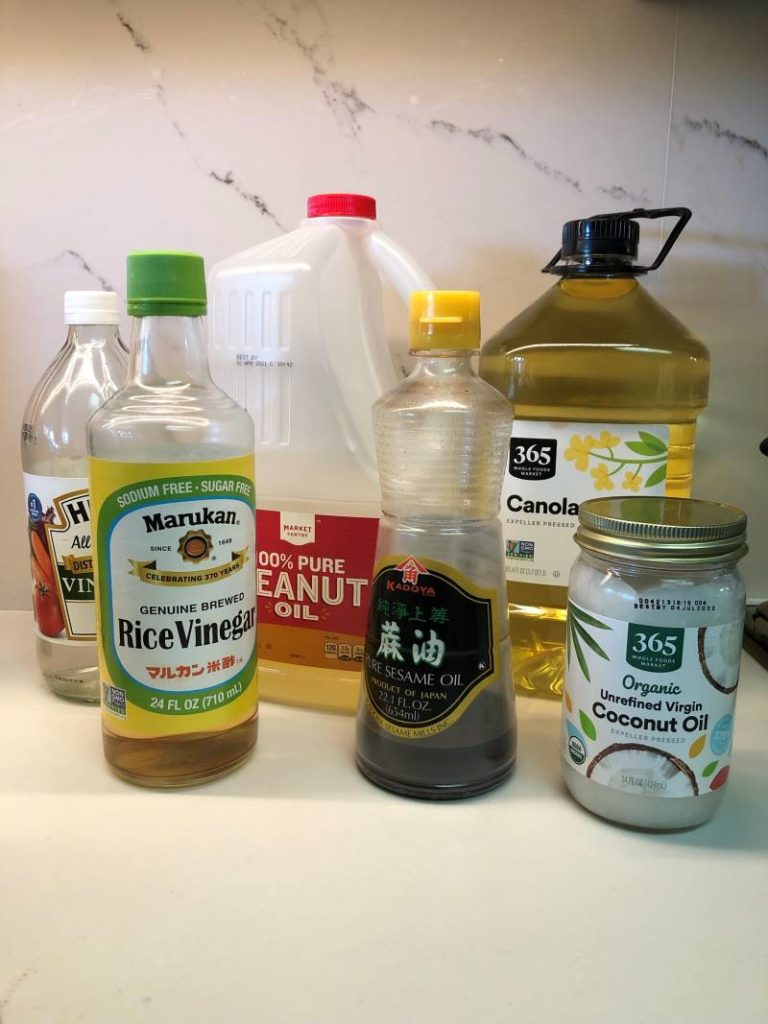
Rice and White Vinegar
Rice vinegar: Choose an unseasoned rice vinegar from Japan for the brightest and cleanest flavor. Aside from the Asian food section, check the regular vinegar selection near cooking oil.
Brands: Marukan (excellent bright flavor), Mizkan (good, slightly milder flavor)
Distilled white vinegar: I use white vinegar for most Vietnamese pickles. It helps me achieve the flavor I want without breaking the bank. No fancy champagne or wine vinegar is needed for do chua daikon and carrot pickle!
Brand: Heinz is more expensive but the flavor is consistently bright
Hopefully, this helps you ease into your Vietnamese cooking adventure. I haven’t covered everything but this short list will get you far!















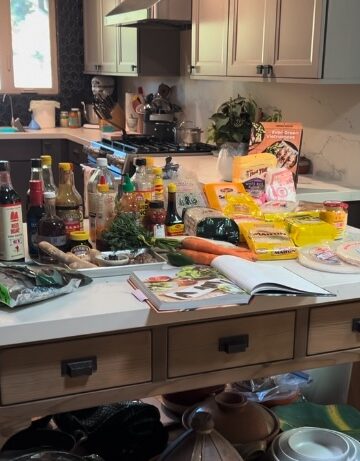
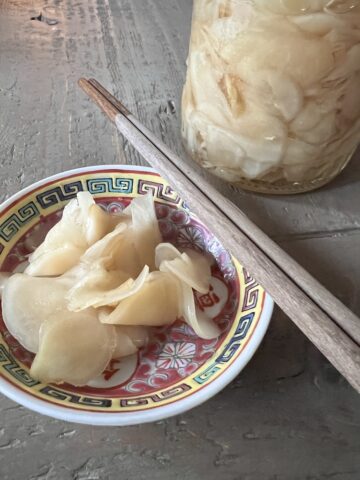
Maureen says
Thank you, Andrea! This is a huge help. I am always overwhelmed by the numerous brands in Asian grocery stores. Just hoping there will be one near my new home town in Tuscon.
Barbara says
Thank you for this article and especially the brands with the pictures!!!! So helpful.
Andrea Nguyen says
So glad it's of help, Barbara!
Wendy says
Thank you for this list . Recently diagnosed coeliac and my consultant told me about Pho and Vietnamese food. Your books are amazing ❤
Andrea Nguyen says
You're welcome, Wendy. I'm glad this helped!
Avon Leekley says
I wish you had set this up to be easily printed - so I could take it to the store!
Andrea Nguyen says
If you have Vietnamese Food Any Day, the photo from the Ingredients section is a great reference.
Roland says
Maggi originated in Europe and is widely used there to add depth and richness to soups, sauces, and dressings. They have slightly different flavor profiles for different markets, so check the label and use the one that suits your preferences. I only use the Swiss/German version because that is what I grew up with. I never use Maggi for Asian dishes. For those I use soy, oyster, fish, hoisin, fermented black bean, etc,
Andrea Nguyen says
Yes, Maggi came from Switzerland and it spread to many other cuisines. Try it for banh mi!
Sacha Hirschfeld says
Thank you so much for putting this together!
Andrea Nguyen says
You're welcome, Sacha!
Cindy Lum says
Thanks for this helpful primer!